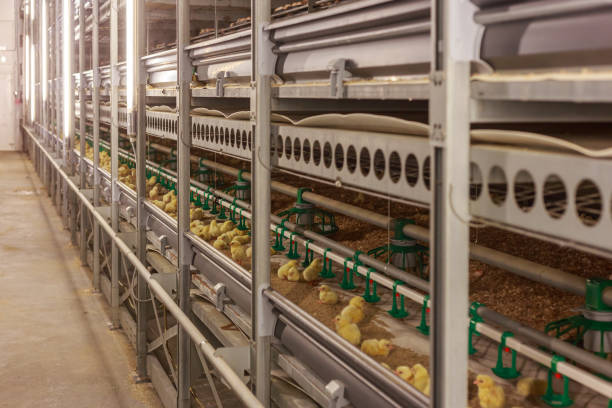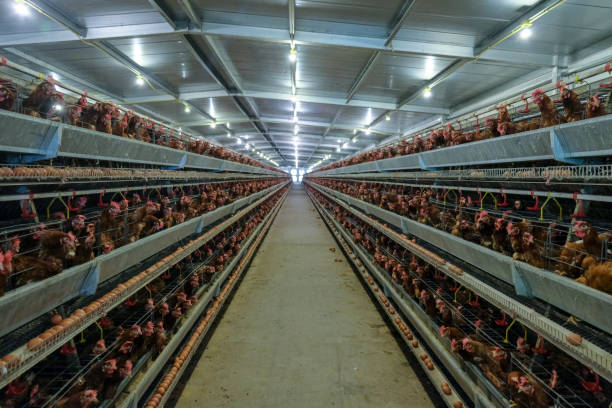
55000-Bird Poultry Cage System for Efficient Farming
55000-Bird Poultry Cage System for Efficient Farming
If you’re managing a large-scale poultry farm or planning to scale up your current operation, you know how crucial it is to have the right infrastructure in place. One of the most effective ways to maximize productivity while minimizing labor and operational costs is by investing in a 55000-bird poultry cage system. This large-capacity setup isn’t just about housing more birds—it’s about smarter farming. At Livi Machinery, we’ve helped hundreds of farmers across Asia, Africa, and South America upgrade their operations with fully automated, durable, and scalable poultry housing solutions. In this article, we’ll walk through why a 55000-bird cage system makes sense for modern farms, what components are involved, and how to choose the best system for your needs.
What Makes a 55000-Bird System Ideal for Commercial Farms?
Let’s start with the basics—why go for such a large system? Simply put, economies of scale. When you house 55,000 birds in a well-designed poultry cage system, your cost per bird drops significantly. Feed efficiency improves, labor demands decrease thanks to automation, and disease control becomes more manageable with consistent monitoring and hygiene protocols.

A 55000-bird system is typically designed for commercial egg production or broiler farming, depending on the cage configuration. For example, if you’re running a layer farm, the system would include multi-tier egg chicken cages with automatic egg collection belts, manure removal systems, and LED lighting controls. For broilers (meat chickens), the cages are wider, lower in height, and focus more on ventilation and weight-bearing strength.
At Livi, our 55000-bird setups are built using galvanized steel that resists rust and corrosion, ensuring at least 15 years of reliable service. The modular design allows for easy expansion or reconfiguration down the line. Each section supports around 5,000–6,000 birds, so a full 55k system usually consists of 9–11 house sections laid out in parallel under one or two long barns. This layout simplifies management and makes daily inspections far more efficient.
We also integrate smart technology into our systems—from climate control panels that adjust temperature and humidity based on real-time data, to feeding lines that deliver precise amounts of feed without waste. These features don’t just save money; they promote better bird health and higher yields.
Key Components of a High-Performance 55k Setup
So what exactly does a complete 55000-bird poultry cage system include? It’s not just about stacking cages high and wide. A truly efficient setup works like a well-oiled machine, where every component plays a role in supporting bird growth, welfare, and farmer convenience.
First up: the poultry cages themselves. We offer three main types—layer cages, broiler cages, and育雏笼 (chick rearing cages). Your choice depends on whether you’re raising pullets, laying hens, or meat birds. Layer cages are often triple- or quadruple-tiered, saving floor space while providing each hen with enough room to move and lay eggs comfortably. Broiler cages are more open, avoiding overcrowding that can lead to health issues.
Next, the feeding system. Our automatic feeding lines run along the length of each cage row, operated by motorized chains or augers. You set the schedule once, and the system delivers fresh feed evenly to all levels—no manual labor needed. This reduces feed waste by up to 20% compared to traditional trays.
Then there’s watering. Each level has nipple drinkers adjusted to the birds’ height, preventing spillage and contamination. These are connected to a central water tank with filters and optional medication dosers, so you can safely administer vaccines or supplements when needed.
Waste management is another critical aspect. Instead of letting manure pile up—which attracts pests and ammonia—our systems include either flat manure belts or slanted trays that transfer droppings outside the house automatically. This keeps the environment cleaner, lowers respiratory problems in birds, and produces dry manure that can be collected and sold as organic fertilizer.
And of course, climate control. Large farms generate a lot of heat and moisture. That’s why we equip every major project with tunnel ventilation systems, cooling pads, and roof insulation. Sensors monitor internal conditions and trigger fans or misters as needed. Birds grow faster and convert feed better when they’re kept in a stable, comfortable environment.
Finally, add-ons like egg collection belts, lighting timers, and alarm systems make the whole operation easier to manage—even with a small crew.
How to Customize Your System for Maximum ROI
No two farms are identical, which is why cookie-cutter solutions don’t work. At Livi, we don’t just ship standard kits—we design customized 55000-bird systems based on your location, bird type, electricity availability, and budget.
For instance, if you’re setting up in a hot climate like Nigeria or Thailand, we prioritize airflow and cooling capacity. If you’re in a colder region like northern China or Iran, we enhance insulation and heating elements.
We also consider local labor costs. In countries where labor is cheap but unreliable, we recommend highly automated systems that reduce dependency on workers. Where electricity is unstable, we can incorporate solar-powered backup systems or manual override options.
Our engineers will help you plan everything from building dimensions to cage spacing, aisle width for carts or robots, and service access points. We even assist with site preparation and installation supervision, ensuring everything goes smoothly from foundation to final delivery.
One recent customer in Kenya started with a 30,000-bird system and expanded to 55,000 within 18 months. By choosing scalable modules from day one, they avoided costly redesigns later. Their feed conversion ratio improved by 12%, and egg production rose from 86% to 92% thanks to consistent environmental control and reduced stress among the flock.
Making the Right Choice Starts with a Conversation
Investing in a 55000-bird poultry cage system is one of the biggest decisions you’ll make as a farm owner. It affects your operational efficiency, animal welfare standards, and long-term profitability. While there are many suppliers out there, what sets Livi apart is our holistic approach—we don’t just sell equipment; we deliver turnkey farming solutions.
From the first sketch to after-sales support, we walk beside you every step of the way. Whether you need help choosing between cage tiers, calculating stocking density, or training staff on new machinery, our team is ready to assist.
If you’re considering upgrading your farm or starting a new large-scale poultry venture, now is the time to reach out. Tell us about your goals, land size, bird type, and location—and we’ll create a free, no-obligation design proposal tailored to your needs. Just leave your contact information below, and one of our experts will get back to you within 24 hours with a personalized quote and system layout.

We’ve helped farmers in over 50 countries build profitable, sustainable operations. Let’s make yours next.
Frequently Asked Questions (FAQ)
What kind of cages are included in a 55000-bird system?
It depends on your purpose. For egg layers, we use multi-tier laying hen cages with egg rollover belts. For broilers, we install low-height meat chicken cages with strong floors and good ventilation. Chicks start in育雏笼 before moving to grow-out units.
Can the system be automated?
Absolutely. Most of our 55k systems come with automated feeding, drinking, manure removal, egg collection, and climate control. You can operate everything from a central control panel or mobile app.
How much space do I need for a 55000-bird setup?
Typically, you’ll need a poultry house around 120–150 meters long and 12–15 meters wide (about 1800–2200 square meters), depending on cage layout and bird density. We provide detailed blueprints after assessing your site.
Is installation included?
We offer full installation guidance, including videos, manuals, and optional on-site technician support. Many customers prefer to hire local labor with our remote supervision to save costs.
How long does delivery take?
Standard systems ship within 30–45 days after order confirmation. Custom designs may take a bit longer, but we keep you updated throughout production.
Do you provide after-sales service?
Yes. We offer spare parts supply, troubleshooting support, and operator training. Our engineers are available via WhatsApp, email, or video call whenever you need assistance.
Can I expand the system later?
Definitely. Our modular design lets you add more rows or sections easily. Starting with fewer birds and expanding as your business grows is a smart strategy we recommend.
What materials are the cages made of?

All our cages are made from heavy-duty galvanized steel wire, resistant to rust and corrosion. Frame thickness, wire gauge, and weld quality meet international durability standards.
Are these systems suitable for backyard farms?
Not really. A 55000-bird system is designed for commercial operations. If you’re running a smaller farm, we have compact models starting from 1,000 to 10,000 birds.
How do I calculate my expected return on investment?
ROI depends on local feed prices, egg/meat market rates, and labor costs. As a general rule, farmers using our fully automated systems see payback periods between 1.5 and 3 years due to higher productivity and lower operating costs.
